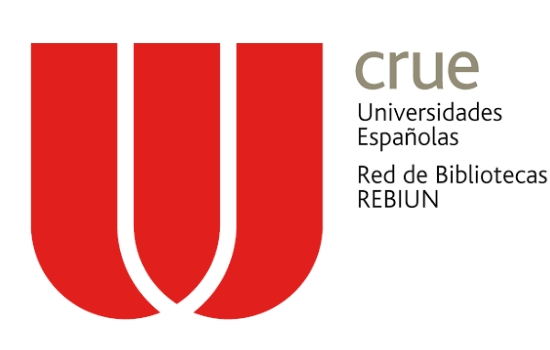‘Doing Together’ as an educational policy of equity and diversity Tikmũ’ũn amid the Covid-19 pandemic
Tikmũ’ũn en medio de la pandemia Covid-19
DOI:
https://doi.org/10.22267/relatem.20131.56Keywords:
Tikmũ’ũn School, Tikmũ’ũn Economics., Sociocultural Practices, Ethnomathematics.Abstract
The purpose of this article is to reflect on issues related to Tikmũ’ũn school education that make up the set of measures that have become urgent in the face of the health crisis established in the face of the Covid-19 pandemic. With this objective, sociocultural perspectives of Mathematics Education - ethnomathematics - methodologically guide the problematization of the school model proposed to Tikmũ’ũn with a view to facing the pandemic, based on documentary sources produced by government agencies. The dialogue with the Tikmũ’ũn cosmovison and the experiences of working with these indigenous people, point out that their socio-cultural practices are based on a 'doing together' that can be understood as a methodological path for the construction of proposals for an education based on diversity, autonomy and in inter-societal relations of equity. In addition, the article highlights the importance of the participation of the Tikmũ’ũn in the construction of educational policies for their schools that can face the challenges exposed by the Covid-19, especially with regard to the economic practices they establish around their villages.
Downloads
References
Álvares, M. (2018). Alteridade e história entre os maxakali. 355p. (Tese de doutorado). Programa de Pós-Graduação em Antropologia Social da Universidade Federal de Santa Catarina, Florianópolis.
Anastácio, V. L. (2018a). Produto I – Diagnóstico referente à Escola Estadual Indígena Izabel da Silva Maxakali e da aldeia que ela atende. UNESCO/SEEMG.
_______. (2018b). Produto I – Diagnóstico referente à Escola Estadual Indígena Maxakali e da aldeia que ela atende. UNESCO/SEEMG
_______. (2018c). Produto II – Plano Estratégico de Expansão do Atendimento Educacional da Escola Estadual Indígena Maxakali. UNESCO/SEEMG.
Brasil, Ministério da Saúde. (2020a). Secretaria Especial de Saúde Indígena. Relatório Resposta ao OFÍCIO/MPF/TOT/MG/FPVSP/Nº 181/2020, Notícia de Fato nº 1.22.023.000076/2020-14. Governador Valadares-MG: DIASI/MGES, 02 de abril 2020.
Brasil, Ministério Público Federal. (2020b). Procuradoria da República. Notícia de fato nº 1.22.023.000076/2020-14. Teófilo Otoni-MG: Ministério Público Federal, 3 de abr. 2020.
Brasil, Ministério da Justiça e Segurança Pública. (2020c). Fundação Nacional do Índio (Funai). Ofício nº 30/2020/sedisc - cr-mges/dit - cr-mges/cr-mges/funai. Governador Valadares-MG: Funai, 27 de mar. 2020.
Campelo, D. F. G. (2018). Das partes da mulher de barro: a circulação de povos, cantos e lugares na pessoa tikmũ,ũn. (Tese de Doutorado). Programa de Pós-Graduação em Antropologia Social, Universidade Federal de Santa Catarina, Florianópolis.
Correa, Célia Nunes. (2018). O barro, o genipapo e o giz no fazer epistemológico de autoria xakriabá: reativação da memória por uma educação territorializada. (Dissertação de Mestrado). Programa de Pós-Graduação Profissional em Desenvolvimento Sustentável (PPGPDS), Área de Concentração em Sustentabilidade junto a Povos e Terras Tradicionais, Brasília.
Correa, Célia Nunes. (2020). Coronavírus já matou 121 indígenas em 59 etnias: “ Com cada um deles, morre parte da nossa história coletiva”, lembra a líder Célia Xakriabá. In: Conexão planeta inspiração para ação. Recuperado de: https://conexaoplaneta.com.br/blog/coronavirus-ja-matou-103-indigenas-em-44-etnias-com-cada-um-deles-morre-parte-da-nossa-historia-coletiva-lembra-a-lider-celia-xakriaba/.
D’Ambrosio, Ubiratan. (1990). Etnomatemática: uma abordagem inclusiva. São Paulo: Ática.
Gutierrez, R. (2017). Living Mathematx: Towards a Vision for the Future. Philosophy of Mathematics Education Journal, November, (32).
Knijnik, G. (2004). Itinerários da Etnomatemática: questões e desafios sobre o cultural, o social e o político na educação matemática. In: Etnomatemática: currículo e formação de professores. Santa Cruz do Sul: EDUNISC, 19-38.
Luciano, G. S. (2011). Educação para manejo e domesticação do mundo: entre a escola ideal e a escola real. Os dilemas da educação escolar indígena no Alto Rio Negro. (Tese de Doutorado). Programa de Pós-Graduação em Antropologia Social, Universidade Nacional de Brasília, Brasília.
Magnani, C., Gomes, A. & Silva, P. (2017). Saberes indígenas na universidade: reflexões sobre as implicações da presença de um grupo de professores Tikmũ’ũn-Maxakali na UFMG. pp. 122-140 VI Reunião de Antropologia da Ciência e da Tecnologia. São Paulo, Brasil. Recuperado de https://ocs.ige.unicamp.br/ojs/react/article/download/2779/2641.
Maxakali, L. (2018). Tãyũmak Tikmũ’ũn yĩy ax. (Trabalho de conclusão de curso). Licenciatura em Formação Intercultural para Educadores Indígenas, Faculdade de Educação, Universidade Federal de Minas Gerais, Belo Horizonte, Brasil. Recuperado de https://www.biblio.fae.ufmg.br/monografias/2018/TCC_Lucio-versao_final.pdf.
Maxakali, P. (2020). Carta ao Ministério Público Federal. Santa Helena de Minas, Minas Gerais.
Orjuela-Bernal, J. I., & Miarka, R. (2018). Caminhando entre a [E]educação [I]indígena, a [E]educação [M]matemática e a [E]etnomatemática. Zetetike, 26(1), 41-58. Recuperado de https://doi.org/10.20396/zet.v26i1.8650820.
Peña-Rincón, P., Tamayo, C. & Parra, A. (2015). Una visión latinoamericana de la etnomatemática: tensiones y desafíos. Revista Latinoamericana de Investigación en Matemática Educativa, 18(2), 137-150. Recuperado de http://relime.org/articulos/1802/201500b/index.html.
Rodrigues, R (2018). Documento contendo o diagnóstico sobre o contexto educacional das aldeias Maxakali da Escola Estadual Indígena Capitãozinho Maxakali. UNESCO/SEEMG.
Romero, Roberto. (2015). A errática tikmũ’ũn_maxakali: imagens da Guerra contra o Estado. (Dissertação de Mestrado). Programa de Pós-Graduação em Antropologia Social do Museu Nacional, Universidade Federal do Rio de Janeiro, Rio de Janeiro.
Rubinger, M. M. (1980 [1965]). Maxakali: o povo que sobreviveu. In: Rubinger, M., M.; Amorim, M., S.; Marcato & M., S. Índios Maxakali: resistência ou morte (pp. 9-117). Belo Horizonte: Interlivros.
Smith, L. T. (2018). Descolonizando metodologias: pesquisa e povos indígenas. Curitiba: Ed. UFPR.
Stengers, I. (2005). The cosmopolitical proposal. In. Making Things Public: Atmospheres of Democracy. Cambridge: Ma: Mit Press, 994-1003.
Silva, P. C. (2017). A letra viva da floresta: a iconografia como guia do design tipográfico Maxakali. (Dissertação de Mestrado). Programa de Pós-Graduação em Design, Universidade do Estado de Minas Gerais, Belo Horizonte, Brasil.
Tomaz, V. S. (2019). O uso de algoritmos de cálculo facilitando aprendizagem expansiva entre a lógica indígena e a lógica de mercado. Revista Brasileira da Pesquisa Socio-histórico-cultural. 1 (2), 1-32.
Tugny, R. (2011). Reverberações entre cantos e corpos na escrita Tikmũ’ũn. TRANS Revista-Transcultural de Música, 15, 1-27.
Wallerstein, I. (2001). Capitalismo histórico e civilização capitalista. Rio de Janeiro: Editora Contraponto.
Wilson, S. (2001). What is indigenous research methodology? Canadian Journal of Native Education, 25(2), 175–179.
Downloads
Published
How to Cite
Issue
Section
License
Copyright (c) 2020 Latin American Journal of Ethnomathematics: sociocultural perspective of mathematics education

This work is licensed under a Creative Commons Attribution 4.0 International License.
Once the article is accepted by the Latin American Journal of Ethnomathematics, the authors cede the rights to publish and distribute the text electronically, including storing it and making it available online.
The authors can distribute their own material without soliciting permission from the Latin American Journal of Ethnomathematics, whenever mentioning that the original version is found at http://www.revista.etnomatematica.org
Copyright © 2008, Latin American Journal of Ethnomathematics
All contents of the Latin American Journal of Ethnomathematics are published under the _ and can be used freely, giving credits to the authors and to the Journal, as established by this license.











